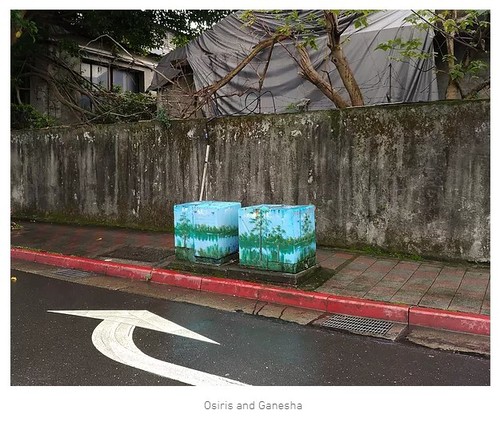Su Hui-Yu Participating in "Osiris and Ganesha" in Mexico
Osiris and Ganesha is an exhibition that explores resurrection in all its forms, using the eponymous Egyptian and Hindu deities as points of departure. The exhibition features the work of six artists from the United States, Taiwan, Mexico, and Japan: Virginia Colwell, Arturo Hernández Alcázar, Su Hui-Yu, Chen I-Hsuen, Che Wei-Chen, and Kosuke Ikeda.
Osiris and Ganesha are deities from Egyptian and Hindu mythology. Osiris was murdered by his brother Set, and was resurrected as God of the Underworld: he became associated with the flooding and retreating of the Nile, the symbolic cycles of nature. Ganesha was fundamentally transformed after being beheaded by his father: his human head was replaced with that of an elephant. Osiris and Ganesha explores these transformations and stories of restoration. If death is viewed as the destruction and suppression of the living condition, resurrection should be the reconstruction, representation, and remembrance of the past. Yet this exhibition suggests such an equation is too simple.
Che-Wei Chen’s Notes on Oblivion is an exploration of a place, a Taiwanese psychiatric hospital, through story, history, and memory. Su Hui-Yu resurrects the narrative of a clandestine pornographic publication in his video installation, Super Taboo. Chen I-Hsuen combines artificial Mexican plants with photographs of plants from Taiwan in City Series: he explores the human desire to resurrect a bond with nature, after the ties between us and Mother Earth have been severed. exform – Taipei and exform – Tainan are the video works of Kosuke Ikeda that investigate changing urban spaces in the face of globalization. Virginia Colwell’s series of drawings, Durazo, illustrate a politically-fraught, abandoned building via the visual style of 19th century etchings of Mayan ruins. Arturo Hernández Alcázar’s exploration of a Mexican print workshop led to the creation of Campos de error (Doble vista), ink works that are the register of a time between past and present. Each of these artists approach resurrection and rebirth in markedly different ways, and these artworks transcend spatial, temporal, and contextual boundaries uniquely. What binds these works together is that every piece in Osiris and Ganesha is the result of new life and new form having been given to something dead, or dying: objects, places, and times breathe again.
This exhibition marks the first step of a collaboration between Taiwan's Very Temple Artsalon (VT) and Mexico's Marso Gallery, who share the goal of promoting inter-regional exchange, alternative space, and the non-mainstream theorization of art.
Osiris and Ganesha is curated by Cheng Shao-Hung, a Taiwanese curator and art critic.
VT Artsalon was founded by a guerrilla-art collective in Taiwan.
Official Site: http://www.marso.com.mx/osirisandganesha
